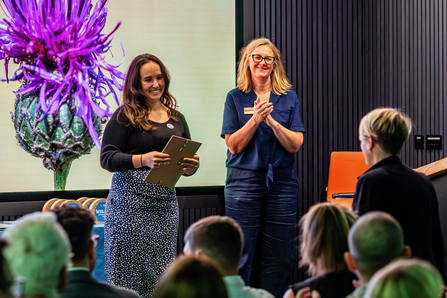The awards, organised by Hampshire and Isle of Wight Wildlife Trust, were announced at the Trust’s Wilder Conference this week with nine awards given to individuals, groups and businesses working to help nature’s recovery.
The winners were:
-
The Young Changemaker Award went to Arun Carson, aged 14, from Bransgore in the New Forest, who started volunteering with the Trust aged just nine. His love for all things marine wildlife has seen him research species and take part in intertidal surveys.
-
The Wilder School Award was given to Hounsdown Primary School in Totton whose eco-team has been leading on a range of projects including creating a wildflower meadow and planting 30 new trees.
-
The Individual Action for Nature Award went to friends Hazel Metcalfe and Sarah Smith from Whitchurch near Basingstoke. They have volunteered with the Watercress and Winterbournes project and founded the Chalk Stream Challenge badge to help youngsters connect with chalk streams.
-
The Wilder Neighbourhood Award was scooped by Wilder Bramley based just north of Basingstoke. The group has created a community bee garden, a wildflower area and the Bramley Green Grassland Restoration Project.
-
The Business of the Year Award was won by Portsmouth-based FatFace which has recently become B Corp Certified in line with its commitment to high environmental and social standards. As well as its dedication to rewilding projects, 100 per cent of its cotton is sustainably sourced and the business has been carbon neutral for the past two years.
-
Innovation for Nature Award was won by Artecology on the Isle of Wight which crafts regenerative ecological environments for wildlife. Products include the Vertipool – an artificial rockpool habitat used on coastal flood defence structures.
-
Nature Recovery (Land and Sea) Award was won by The Lockerley Estate in East Tytherley near Stockbridge. Over the past eight years, the estate has transformed from a conventional arable farming system to a regenerative one, adopting techniques such as direct drilling to minimise soil damage, and drastically cutting back on fuel use; the estate has also set aside 28 hectares for wildlife through rewilding and, low intensity grazing, as well as creating wildflower meadows and restoring wood pasture.










